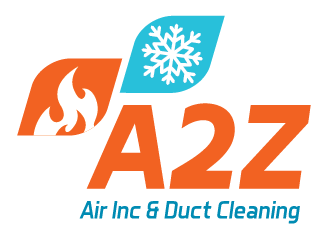
You shouldn’t have to sacrifice comfort or empty your wallet to keep your house at the right setting during warm days.
But what is the best temperature, exactly? We go over suggestions from energy professionals so you can select the best temperature for your house.
Here’s what we suggest for the most energy-efficient setting for air conditioning in Boynton Beach.
Recommended Thermostat Settings for Summer
Most households find placing the thermostat at 72-73 degrees is ideal. However, if there’s a big difference between your inside and exterior temperatures, your electricity expenses will be greater.
These are our recommendations based on the U.S. Department of Energy (DOE) and ENERGY STAR®.
While at home: 78 degrees. While that sounds too high, there are approaches you can keep your house refreshing without having the AC on constantly.
Keeping windows and curtains down during the day keeps cold air where it should be—within your home. Some window coverings, including honeycomb shades or plantation shutters, are designed to deliver extra insulation and enhanced energy conservation.
If you have ceiling fans in your home, the DOE says you can raise thermostat settings about 4 degrees hotter without sacrificing comfort. That’s because they cool by a windchill effect. Since they cool people, not spaces, turn them off when you leave a room.
If 78 degrees still appears too uncomfortable on the surface, try doing a trial for approximately a week. Get started by upping your thermostat to 78 degrees while you’re at your residence. Then, gradually lower it while adhering to the suggestions above. You might be shocked at how refreshed you feel at a higher temperature setting.
While away: 88 degrees. There’s no rationale for keeping the AC running all day while your home is empty. Turning the temp 7–10 degrees hotter can save you anywhere from 5–15% on your AC bills, according to the DOE.
When you come home, don’t be tempted to set your thermostat under 78 to cool your home more rapidly. This isn’t productive and typically leads to a more expensive electricity expense.
A programmable thermostat is a useful way to keep your settings in check, but you have to set programs. If you don’t set programs, you risk forgetting to change the set temperature when you go.
If you want a hassle-free fix, consider getting a smart thermostat. This thermostat links with your phone, so it knows when you’re at your house and when you’re out. Then it automatically modifies temperature settings for the biggest savings. How much exactly? Usually $180 each year on heating and cooling, according to ENERGY STAR.
Another plus of having a smart thermostat? You can use your phone to monitor and adjust temperature settings from just about anywhere.
While sleeping: Around 70 degrees. While ENERGY STAR suggests 82 degrees, that may be unpleasant for many families. Many people sleep better when their sleeping area is chilly, so that’s why the National Sleep Foundation recommends 60–67 degrees. But that might be too cold, due to your PJ and blanket preference.
We advise using a similar test over a week, moving your temperature higher and progressively lowering it to pick the ideal setting for your residence. On cool nights, you might learn keeping windows open at night and running a ceiling fan is a preferable option than operating the air conditioner.
More Ways to Save Energy During Hot Weather
There are other ways you can conserve money on AC bills throughout warm weather.
- Buy an energy-efficient air conditioning system. Central air conditioners only work for about 12–15 years and get less efficient as they age. An updated air conditioner can keep your house cooler while keeping energy expenses down.
- Book yearly air conditioner maintenance. Routine air conditioner maintenance keeps your system running properly and might help it work at better efficiency. It might also help prolong its life span, since it allows professionals to pinpoint little problems before they cause a major meltdown.
- Change air filters frequently. Follow manufacturer instructions for switching your air filter. A dirty filter can result in your system short cycling, or switch on and off too often, and drive up your electricity.
- Inspect attic insulation levels. Nearly 90% of homes in the U.S. don’t have enough insulation, according to the Insulation Institute. The majority of southern climates should have 13–14” of attic insulation, while northern climates require 16–18”.
- Have your ductwork examined. Ductwork that has separated over time can leak cold air into your attic, walls or crawl space. This can lead to big comfort troubles in your residence, such as hot and cold spots.
- Seal holes, doors and windows. Keep hot air in its place by sealing openings. You can also caulk or weather strip doors to keep more cool air within your home.
Conserve More Energy This Summer with A2Z Air Inc
If you need to save more energy this summer, our A2Z Air Inc specialists can assist you. Give us a call at 561-270-6228 or contact us online for extra information about our energy-saving cooling solutions.



